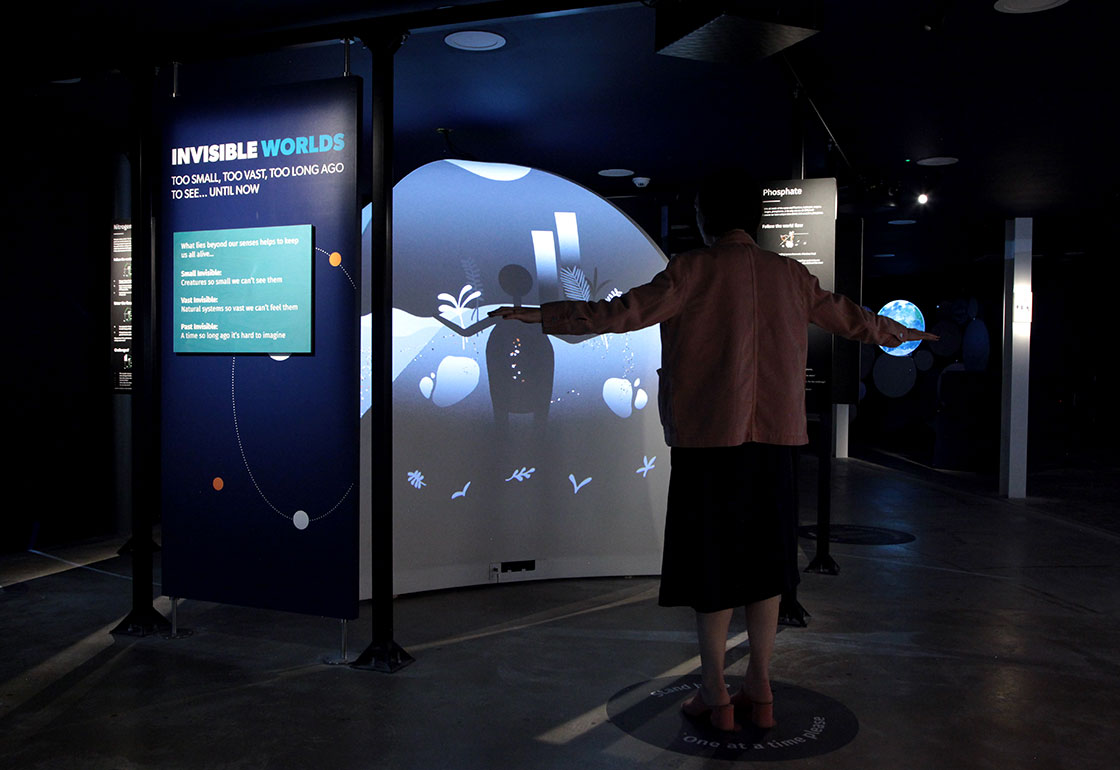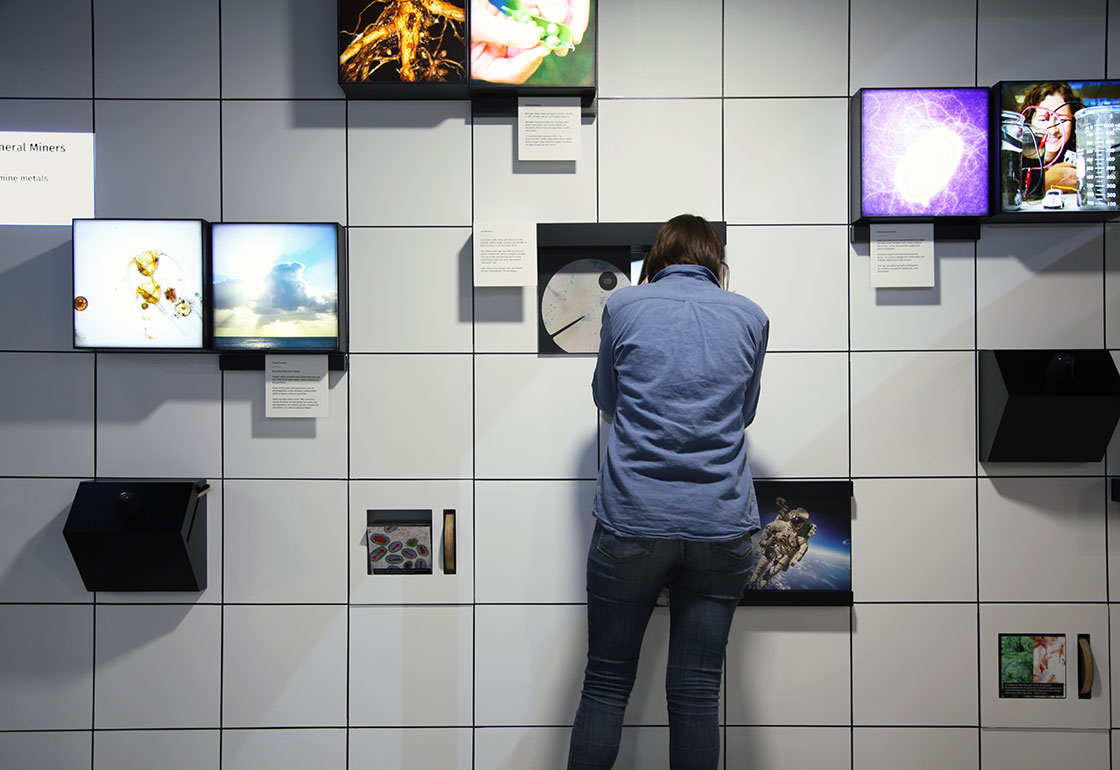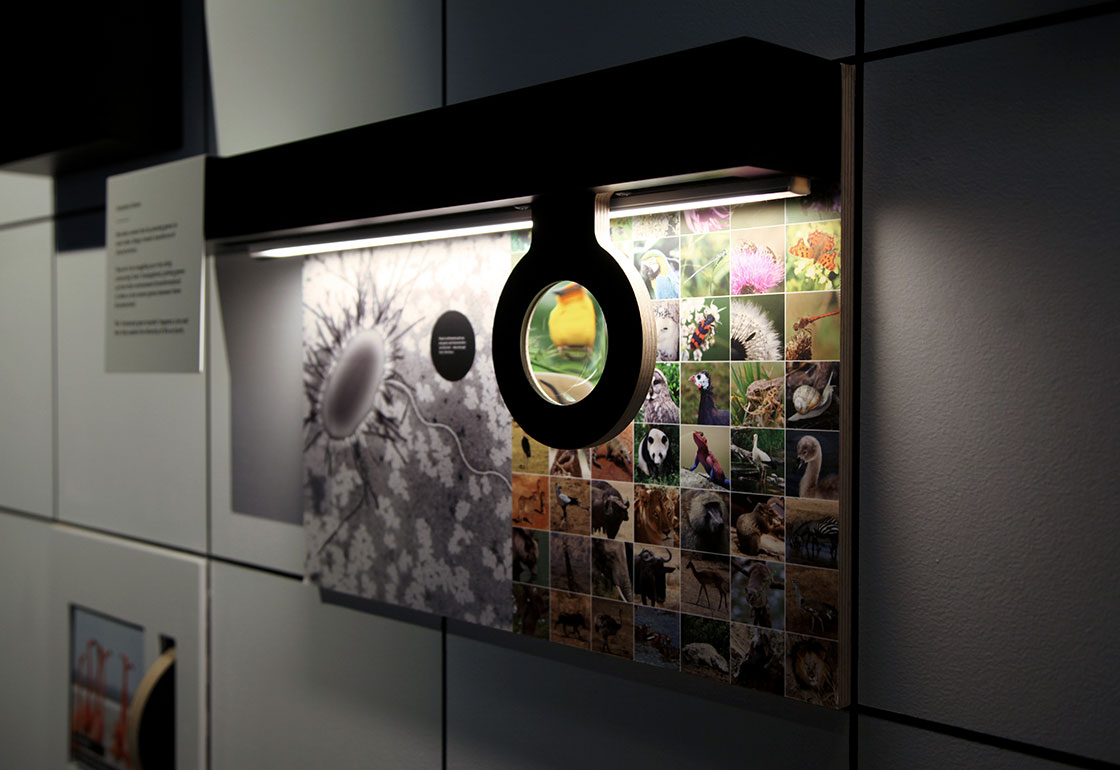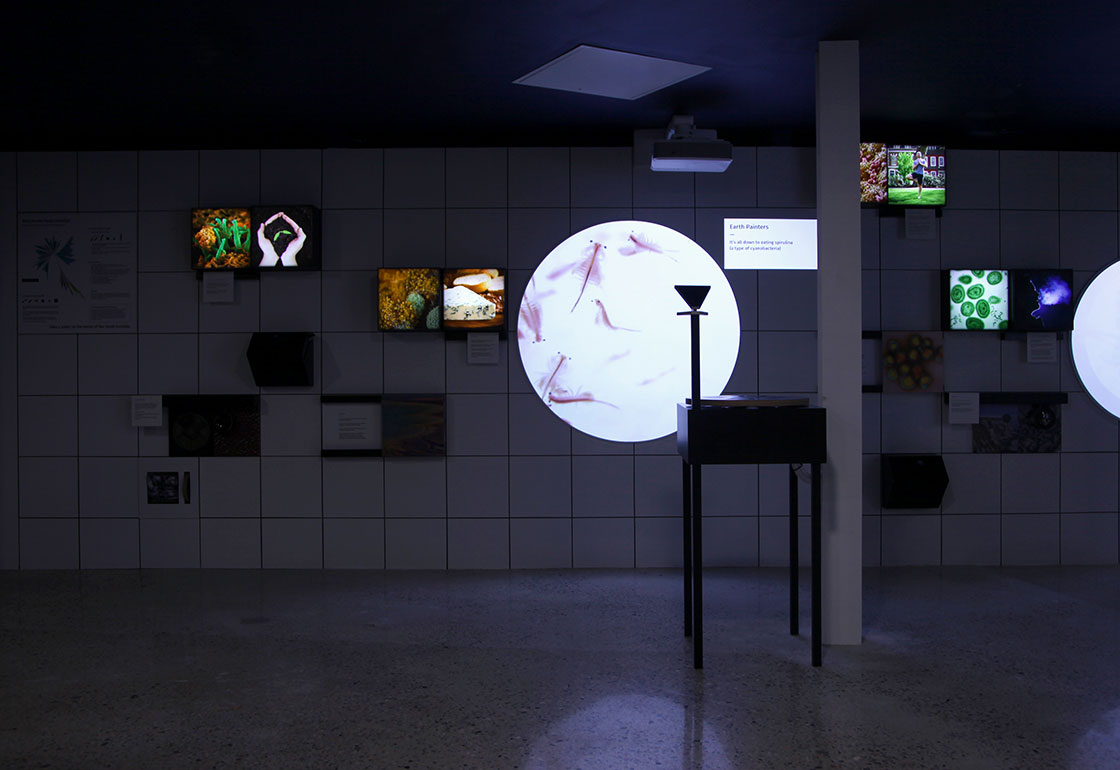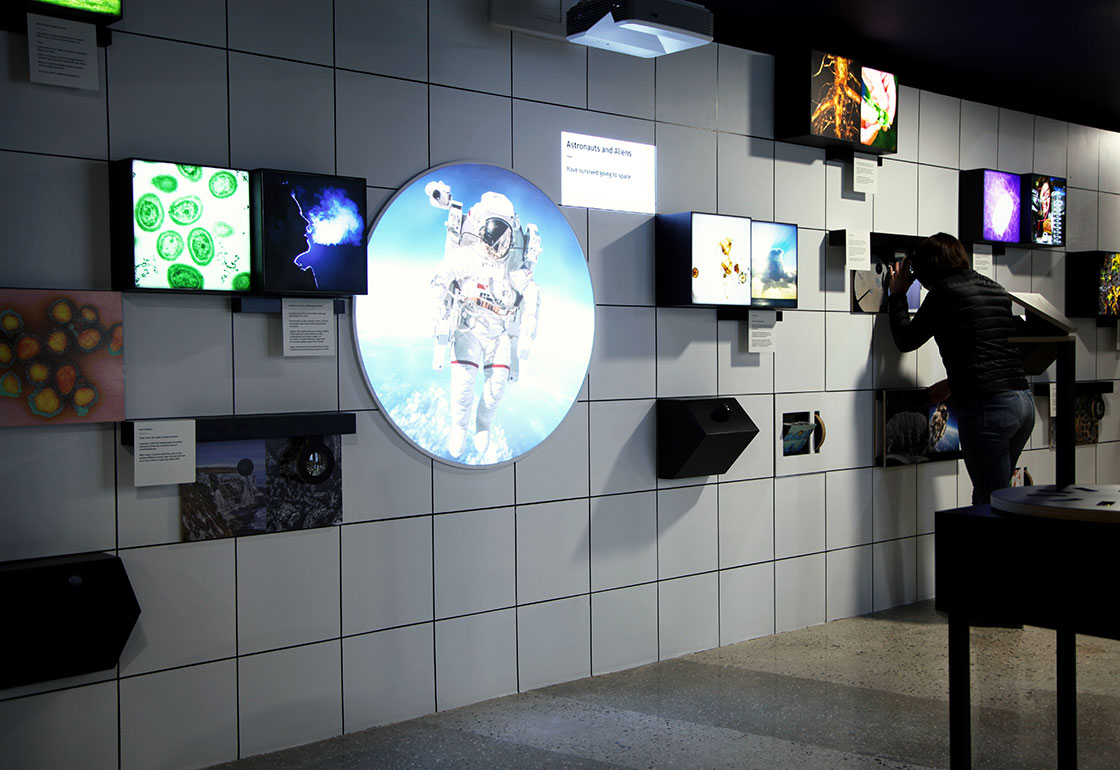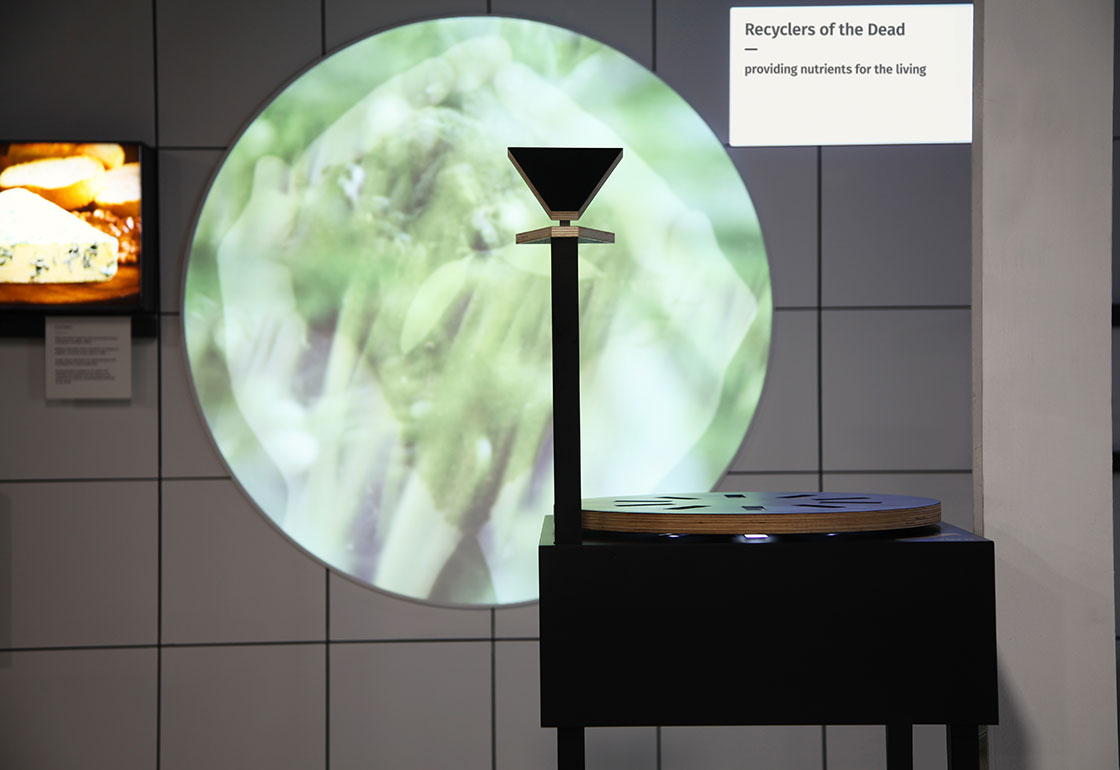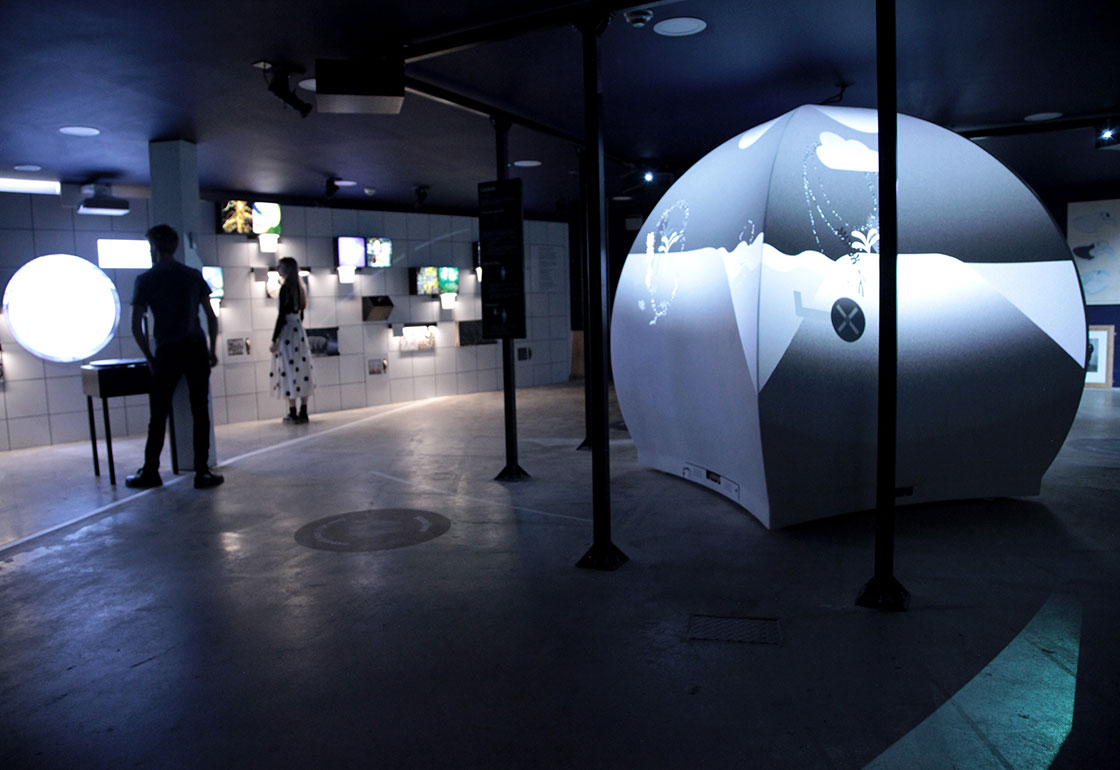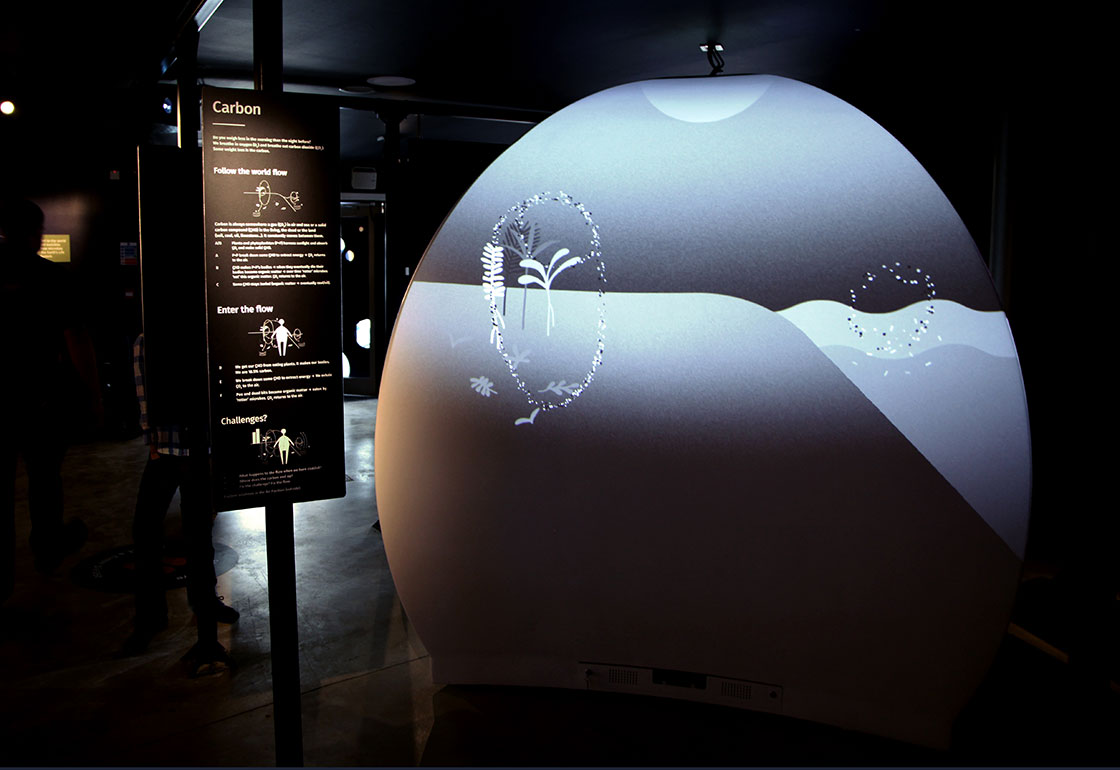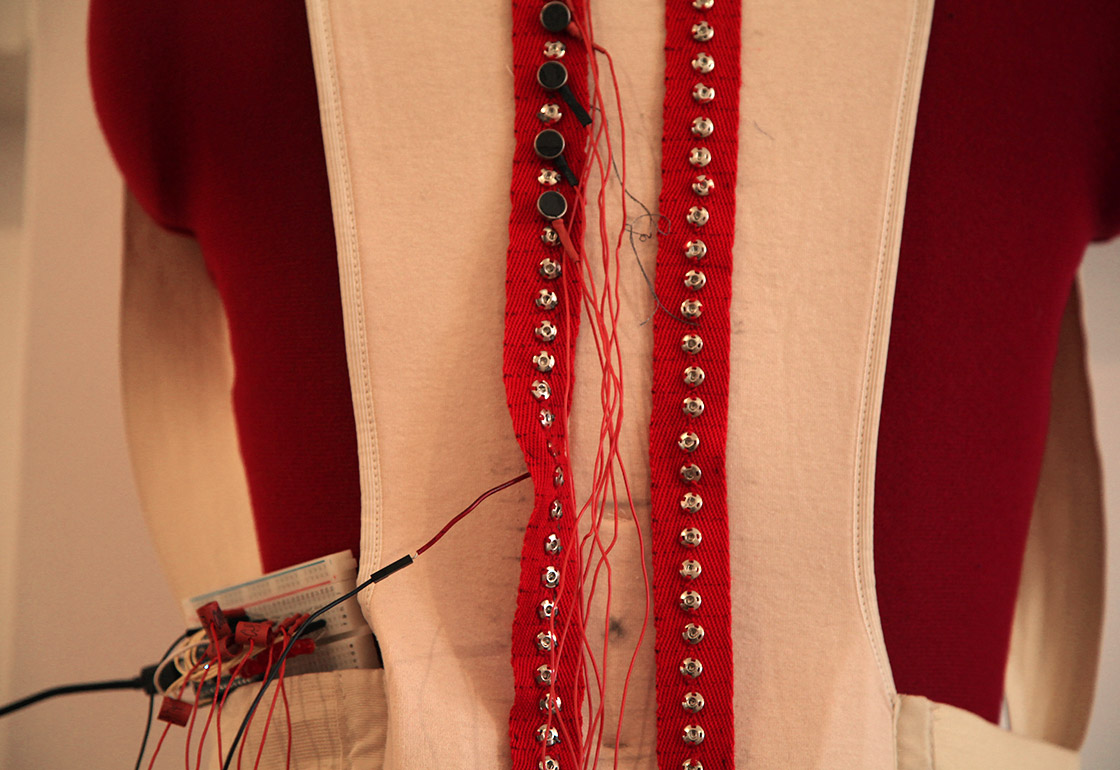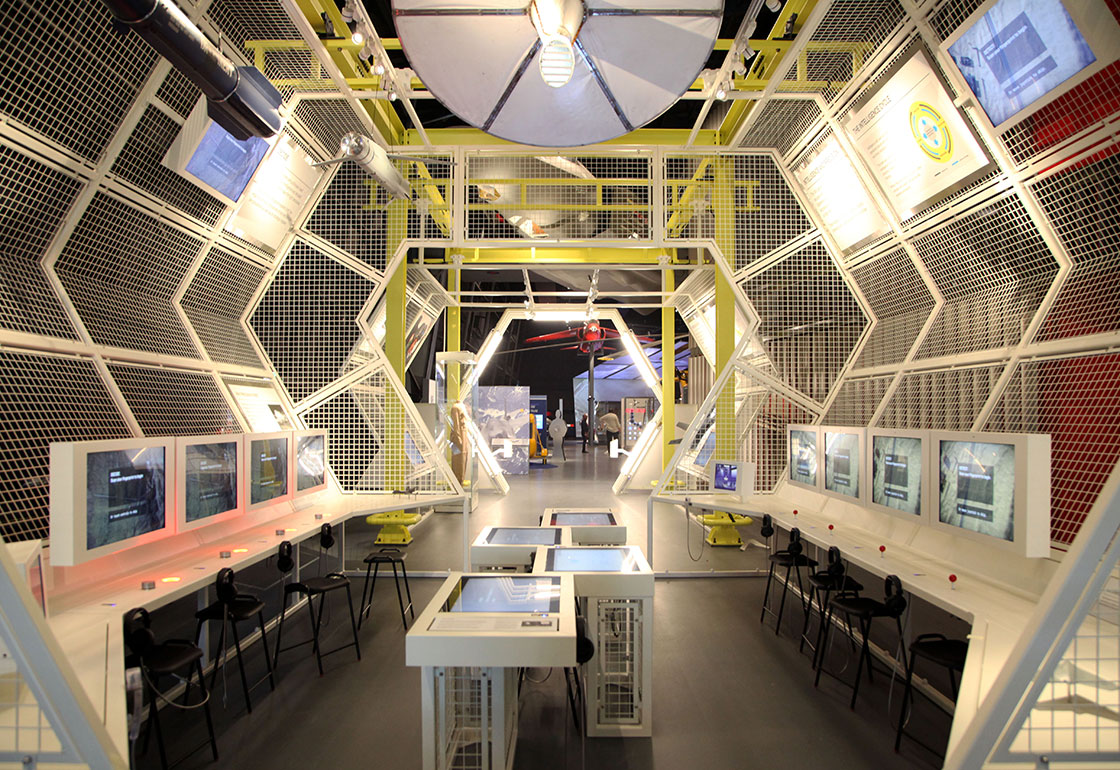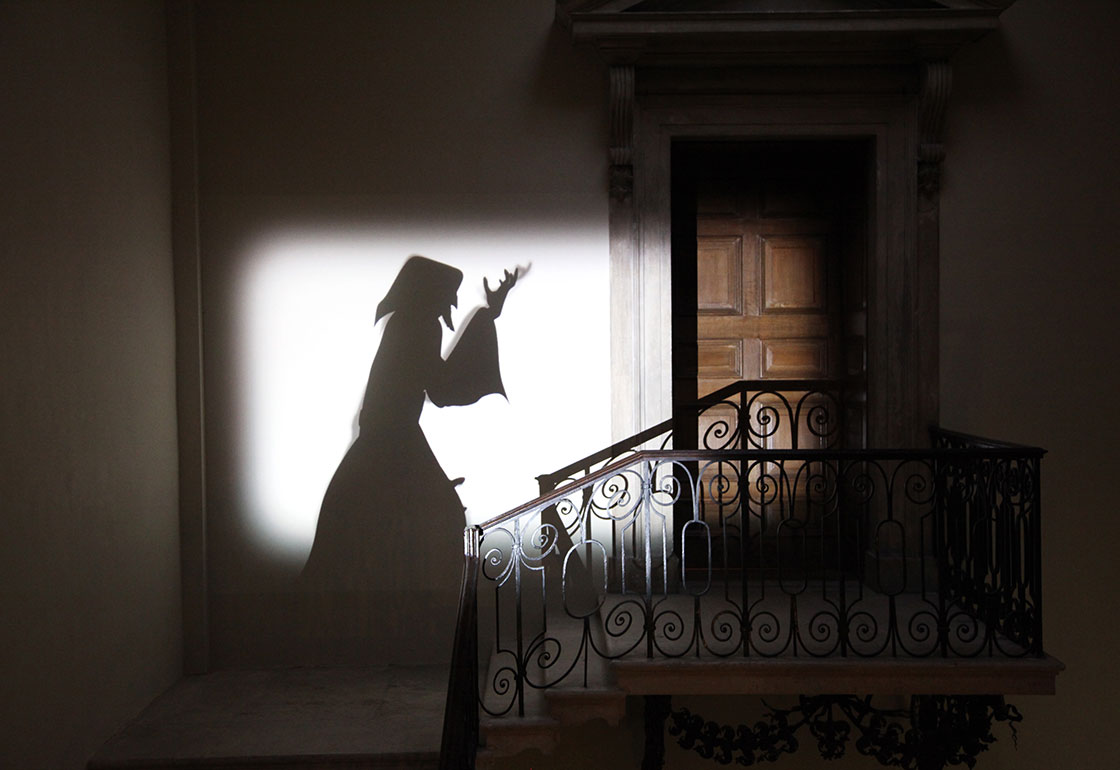Invisible Worlds – The Eden Project
The Brief
The Eden Project’s major permanent exhibition, Invisible Worlds, explores the interconnectedness of life and aspects of the world that can’t usually be seen with the naked eye. Eden asked us to design their first interactive digital exhibits to be installed at the Cornwall site.
The Solution
The Small Invisible is a 13 meter long wall showcasing 24 microbial stories and encouraging visitors to explore them in different ways. Light boxes illuminate beautiful magnified photographs of microbes and the jobs they do. Visitors can use microscopic lenses or peer into viewfinders to flick through scientific sequences. Smaller children can play with scrollers and sliders and in doing so begin to learn about this unusual invisible world.
Two carousel projector wheels display a selection of backlit microbial scientific slides. Visitors can turn the wheel to change projected content on the wall, animated loops of microbes at work. These projected discs evoke specimens viewed under a microscope.
The Vast Invisible’s four sided structure uses projection to illustrate four of the Earth’s cycles – phosphorus, carbon, nitrogen and hydrogen. When a visitor stands in front of a cycle, a human form appears within the scene, interrupting the natural flow. A 3D camera allows the visitor to move the figure within the scene – a representation of themselves.
At its core, the Vast Invisible is a fun way for visitors to engage with the world’s cycles. However, it is also beginning to tell an important story. These ever present cycles are being disrupted by industrialisation and as humans we should begin to recognise the role we play and the impact we have on our world.
